12 Wildflowers That Grow In Wisconsin (Identification Guide With Pictures)
-
Greg Iacono
- Last updated:
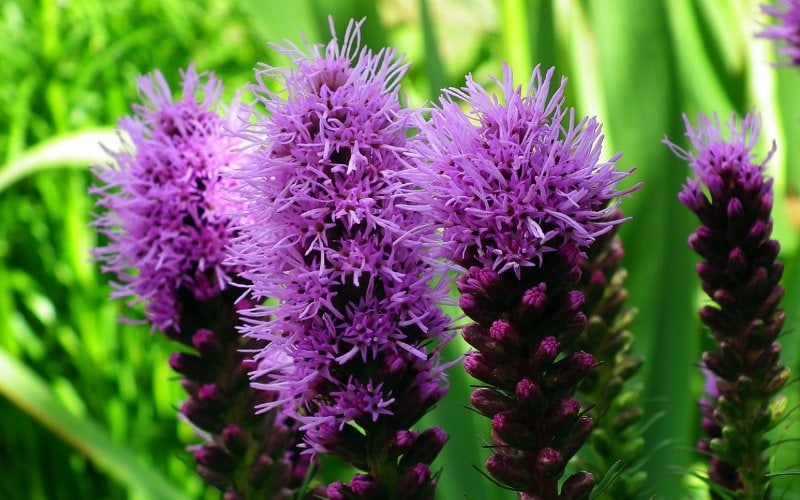
In Wisconsin, the prairies are everywhere you look, and so are the beautiful wildflowers that grow there. You’ll find several gorgeous wildflowers in the Badger State from early spring until late fall. That makes knowing what they are and what to look for quite helpful if you’re a flower fanatic. To get you started, below, we’ve compiled a list of the 12 wildflowers that grow in Wisconsin, along with identifying factors. If that sounds like the flower-powered info you’re searching for today, read on!
The 12 Wildflowers That Grow In Wisconsin
1. Prairie Phlox
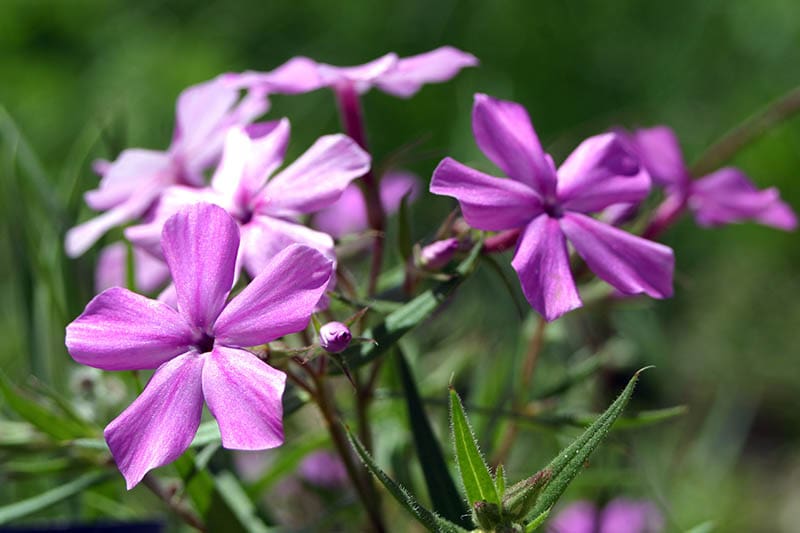
| Scientific Name: | Phlox pilosa |
| Mature Size: | 2 feet |
| US Hardiness Zone: | 4 to 9 |
| Soil Type: | Moderate moisture, well-draining |
The Prairie Phlox is a delicate flower even though it stands nearly 2 feet tall when mature. You can identify this dainty beauty by the five lobes (aka petals) that display a beautiful light purple to lavender color. Also, Prairie Phlox tend to grow in large clusters, making them easier to find than many other wildflowers in Wisconsin.
2. Prairie Coneflower
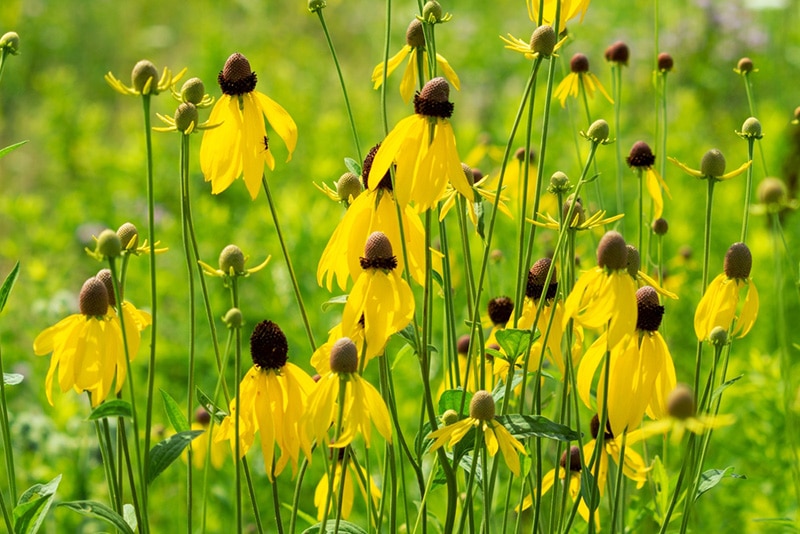
| Scientific Name: | Ratibida columnifera |
| Mature Size: | 3 feet or more |
| US Hardiness Zone: | 4 to 8 |
| Soil Type: | Sandy and loamy |
Another Wisconsin wildflower that’s rather striking in its appearance is the Prairie Coneflower. That might be because this beautiful wildflower grows over 3 feet tall, which is taller than most dogs! The Prairie Coneflower has what looks like a tiny pineapple at the top, called the disc, with long, flowing yellow petals hanging from the bottom. In some ways, they look like a badminton shuttlecock, but please don’t swat these pretty Wisconsin wildflowers with a racket.
3. Blazing Star

| Scientific Name: | Liatris spicata |
| Mature Size: | 5 to 6 feet |
| US Hardiness Zone: | 3 to 9 |
| Soil Type: | Fast draining, loose, gritty |
While some mistake it for Purple Loosestrife, the Blazing Star is not an invasive species but another of Wisconsin’s beautiful wildflowers. The Blazing Star has one stalk, which is the best way to tell these two species of plants apart. Another way to know if you’re seeing a Blazing Star is to locate its delicate, wispy pink petals that look almost like bits of yarn. When fully grown and totally in bloom, a single stalk can have dozens of flowers and grows taller than the average person.
4. Black-eyed Susan

| Scientific Name: | Rudbeckia hirta |
| Mature Size: | Differs every season from 18 inches to 6 feet |
| US Hardiness Zone: | 3 to 10 |
| Soil Type: | Clay and loam |
One of the most well-known and beloved of all the prairie wildflowers in Wisconsin is the Black-eyed Susan. It’s so beloved, in fact, that many folks grow this pretty flower in their home gardens and on their front porches. Similar to the Prairie Coneflower, the Black-eyed Susan has what looks like a brown or black gumdrop in its center (its disc) with 16 to 20 delicate, yellow petals surrounding it. What’s fascinating about these Wisconsin wildflowers is that, depending on the year, location, and situation, they can grow anywhere from 18 inches tall to over 6 feet!
5. Purple Coneflower
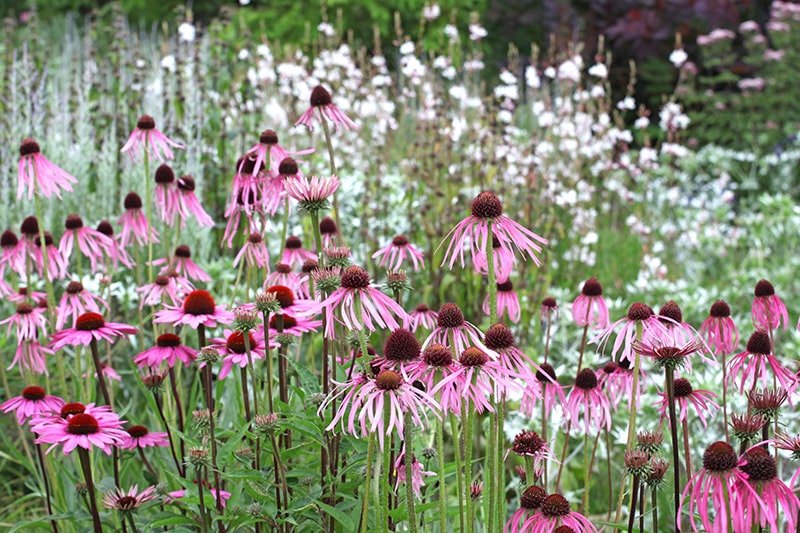
| Scientific Name: | Echinacea purpurea |
| Mature Size: | 2 to 4 feet |
| US Hardiness Zone: | 3 to 9 |
| Soil Type: | Sandy, rocky, clay |
If you’ve ever heard of Echinacea, you’ve also heard about the Purple Coneflower, which is where echinacea comes from. This strikingly beautiful Wisconsin wildflower has a massive center disc that’s a dark, reddish brown when the flower’s in bloom. Its petals are larger than most and hang down from the center in what can only be called a lounging fashion. Growing 2 to 4 feet high will, along with their hard-to-miss center, make it easy to identify the Purple Coneflower.
6. Prairie Dock

| Scientific Name: | Silphium terebinthinaceum |
| Mature Size: | 24 to 36 inches |
| US Hardiness Zone: | 4 to 8 |
| Soil Type: | Dry to moderately dry |
The Prairie Dock wildflower is easy to spot because it looks so emaciated. That’s because it has spindly stems with few leaves and a splash of yellow on top. One great way to tell if you’re looking at a Prairie Dock in Wisconsin is to look at its base. If there are large, heart-shaped leaves, it’s a Prairie Dock.
7. Compass Plant

| Scientific Name: | Silphium laciniatum |
| Mature Size: | 8 feet |
| US Hardiness Zone: | 3 to 9 |
| Soil Type: | Well-drained with no heavy clay |
Although they have similar petals and colors as several other wildflowers on our list, the Compass Plant can be identified by its yellow center. All the others have brown or black centers. Also, the petals of the Compass Plant stick together in pairs or groups of three rather than spread out evenly across the flower. One fascinating fact about the Compass plant is that when the United States was settled, early arrivals used the plant to figure out which direction was north, as the Compass plant almost always takes an orientation of north to south when growing.
8. Goldenrod
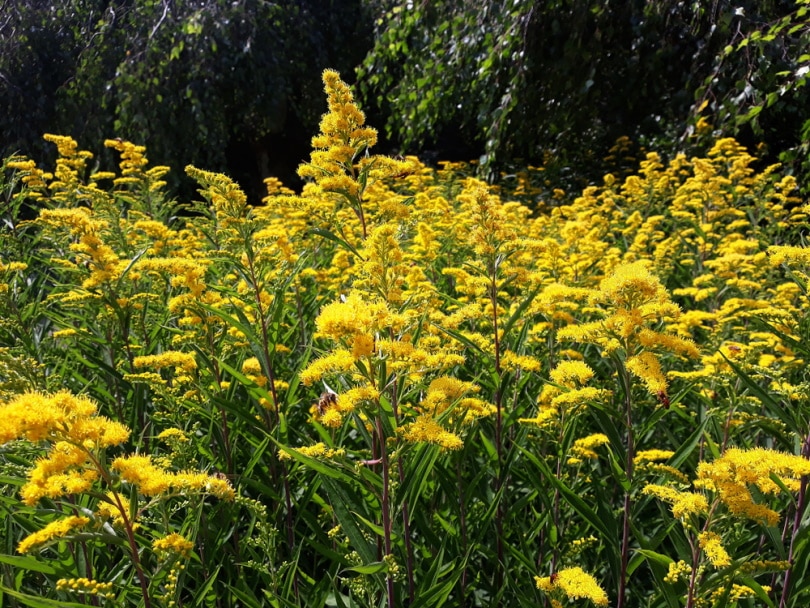
| Scientific Name: | Solidago |
| Mature Size: | 18 inches to 5 feet |
| US Hardiness Zone: | 2 to 8 |
| Soil Type: | Well-drained, medium-wet soil |
The Goldenrod isn’t going to make anyone’s list of the most beautiful wildflowers in Wisconsin, it’s true, but what they lack in beauty, they make up for in green ground cover that’s not hard on the eyes. When in bloom, the Goldenrod lives up to its name with tiny yellow flowers that are quite delicate and make a good background flower for floral arrangements. To find Goldenrod in Wisconsin from May through October, throw a rock in any direction.
9. Prairie Smoke
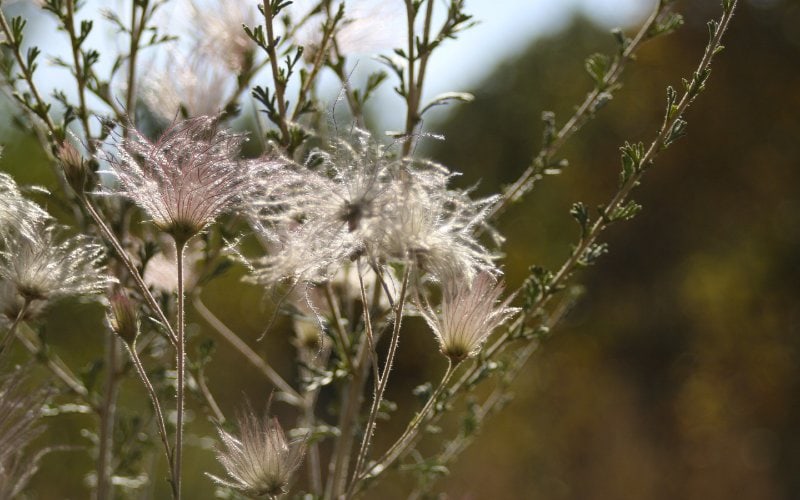
| Scientific Name: | Geum triflorum |
| Mature Size: | 10 inches |
| US Hardiness Zone: | 3 to 7 |
| Soil Type: | Sandy, loamy, clay |
Identifying the Prairie Smoke is one of the first you need to learn, as it’s one of the first flowers to bloom every spring in Wisconsin. Although they’re pink and droopy when they first come out, the flower’s petals eventually turn white, stand up, and become wispy and light. It’s quite the transformation!
10. Pasque Flower
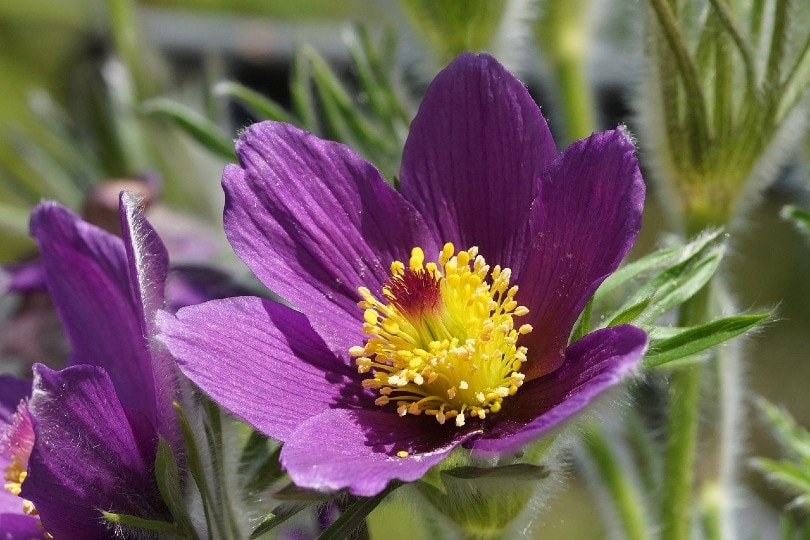
| Scientific Name: | Pulsatilla patens var. multifida |
| Mature Size: | 10 inches |
| US Hardiness Zone: | 4 to 8 |
| Soil Type: | Well-drained |
The best way to identify this striking Wisconsin wildflower is to look at its gorgeous lavender leaves. In the center, you’ll find a splash of yellow with another smaller splash of lavender inside. When in full bloom, these wildflowers are one of the prettiest in the state and hard to miss. If you see a Pasque Flower in Wisconsin, you’ll know what it is immediately because no other wildflower around looks quite like it. Indeed, it’s almost alien in its appearance and far different from most other Wisconsin wildflowers.
11. Prairie Spiderwort

| Scientific Name: | Tradescantia bracteata |
| Mature Size: | 1 to 3 feet |
| US Hardiness Zone: | 4 to 9 |
| Soil Type: | Humus-like soil, slightly acidic |
Being the only deep blue and purple wildflower in Wisconsin does have the advantage of helping you spot the Prairie Spiderwort quite easily. Most have three large petals surrounding a yellow center with a splash of black in the middle. Since they grow between 1 to 3 feet tall, the Prairie Spiderwort is also easy to spot, and they usually grow in big bunches together. Most plants have dozens of flowers, making this wildflower one of the easiest to find in Wisconsin.
12. Royal Catchfly
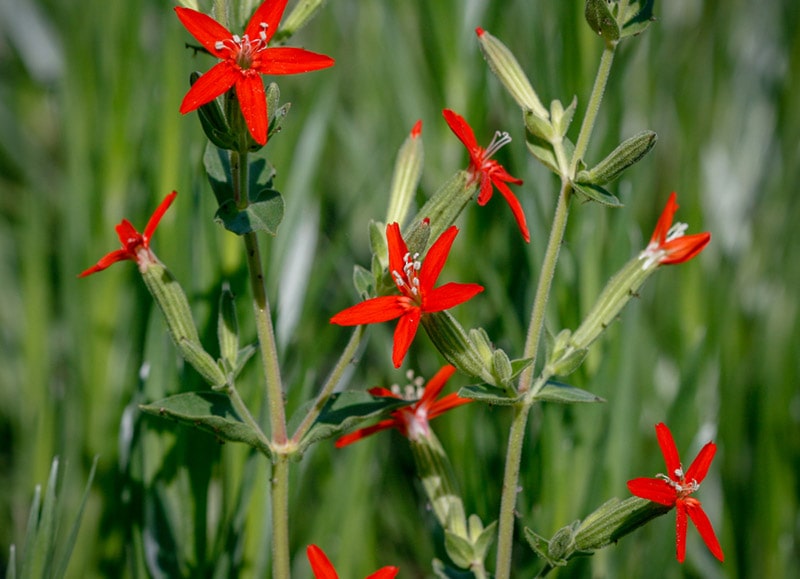
| Scientific Name: | Silene regia |
| Mature Size: | 3 to 4 feet |
| US Hardiness Zone: | 4 to 9 |
| Soil Type: | Sandy, gravel, well-drained |
Today’s final Wisconsin wildflower might be one of the most striking of the entire bunch! The Royal Catchfly has dark-red petals that look magnificent. One way to spot this lovely Wisconsin wildflower is to look for hummingbirds since its color and nectar attract them. Another is to look for wildflowers that are 3 to 4 feet tall and have the deepest, reddest petals you’ve ever seen. Typical Royal Catchfly flowers have five thin petals that make them look like gorgeous starfish, with a tiny stamen in the center that’s all but unnoticeable.
Final Thoughts
What did you think of the 12 wildflowers we presented today? All the species have their unique charm. Also, as we’ve seen, many Wisconsin wildflowers have a large, easy-to-spot disc at their center. Most of these wildflowers don’t start to bloom until at least the middle to the end of April in Wisconsin.
Why so late? Because the winters in the Badger State are brutal, cold, and long. The good news is that as soon as you start seeing any of the wildflowers on our list, you’ll know that winter is nearing its end, and outdoor weather is on the way back! Best of luck identifying the beautiful Wisconsin wildflowers we’ve examined today!
Featured Image Credit: MrGajowy3, Pixabay
Contents

